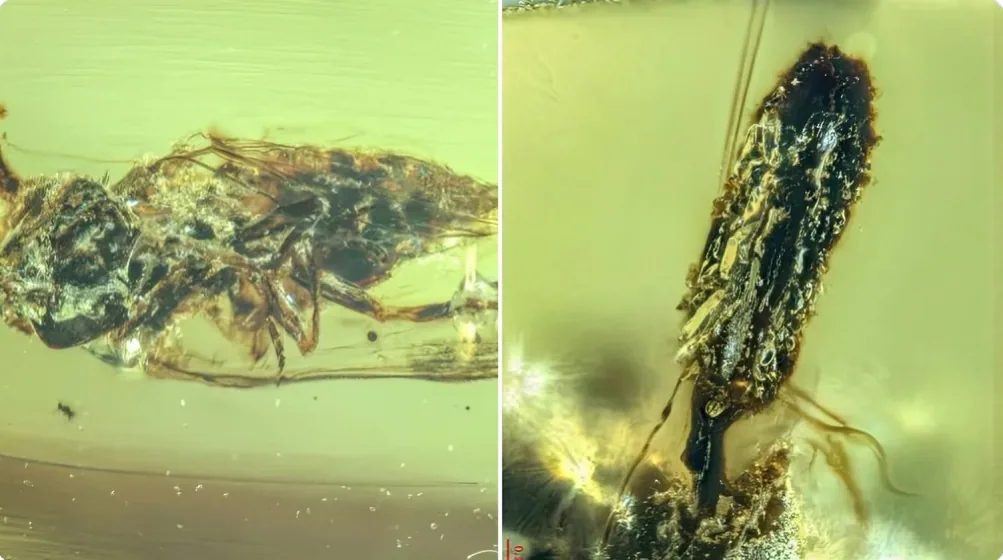
Zombie Ants And Flies? 99-Million-Year-Old Amber Shows Fungi Turning Bugs Into Monsters
Researchers studying 99-million-year-old amber from Myanmar have discovered two insects killed by a rare type of fungus. One is a fly, the other a young ant. Both show signs of being infected by a 'zombie fungus', a fungus that takes control of an insect's body before killing it.
Two ancient insects found with zombie fungi
The fungus had even grown out of the fly's head, forming a mushroom-like structure. The discovery has amazed scientists, as it is one of the oldest examples of this strange behavior in nature.
Why this discovery is important
The two fossils are rare. They were found among tens of thousands of amber pieces but stood out because they clearly show the relationship between fungus and insect.
Yuhui Zhuang, a PhD student at Yunnan University in China, led the study. He said amber is valuable because it lets scientists see ancient ecological relationships that would otherwise be lost.
The findings were published on June 11 in the journal Proceedings of the Royal Society B: Biological Sciences.
Two new fungal species identified
Using microscopes and 3D scanning technology, the team studied the infected insects in detail. They found two new species of the ancient fungus:
- Paleoophiocordyceps gerontoformicae, found on the ant Paleoophiocordyceps ironomyiae, found on the fly
These are relatives of modern Ophiocordyceps fungi, which are known today for turning ants into“zombies.”
The zombie effect: How fungi take over insects
Even today, certain fungi infect insects by entering their bodies, usually through soft areas like the head.
The fungus then controls the insect's movements, forcing it to climb to high spots where the fungus can grow and spread its spores. Eventually, the insect dies, and the fungus grows out of its body.
According to Conrad Labandeira, a fossil expert from the Smithsonian, ants were likely early targets for these fungi, and still are today. He also noted that flies are rarely infected by this fungus, making this fossil even more special.
A small window into ancient life
The infected insects likely died from the fungus, then got trapped in tree resin, which hardened into amber over millions of years.
Scientists say that many more parasites like these once existed, and helped shape the natural world we live in today.
“We only see a tiny part of ancient life in amber,” said Phil Barden, an insect fossil expert from New Jersey Institute of Technology.“For each insect fossil, there could be many invisible bacteria, fungi, or parasites we may never see.”
Echoes of today's world
Fungi like Ophiocordyceps continue to exist in rainforests today. They inspired the video game and HBO show 'The Last of Us', which imagines a world where such a fungus infects humans.
Edmund Jarzembowski, a scientist from London's Natural History Museum, said it's fascinating to learn that such strange behavior existed even during the time of dinosaurs.
“What we see in nature today, like zombie fungi, was already happening millions of years ago,” he said.
Fossils came from Myanmar
The amber came from Myanmar, a country with rich fossil resources but also ongoing civil conflict.
Lead researcher Zhuang said the fossils were bought before 2017, and were not linked to armed conflict, based on their records.
Legal Disclaimer:
MENAFN provides the
information “as is” without warranty of any kind. We do not accept
any responsibility or liability for the accuracy, content, images,
videos, licenses, completeness, legality, or reliability of the information
contained in this article. If you have any complaints or copyright
issues related to this article, kindly contact the provider above.


















Comments
No comment